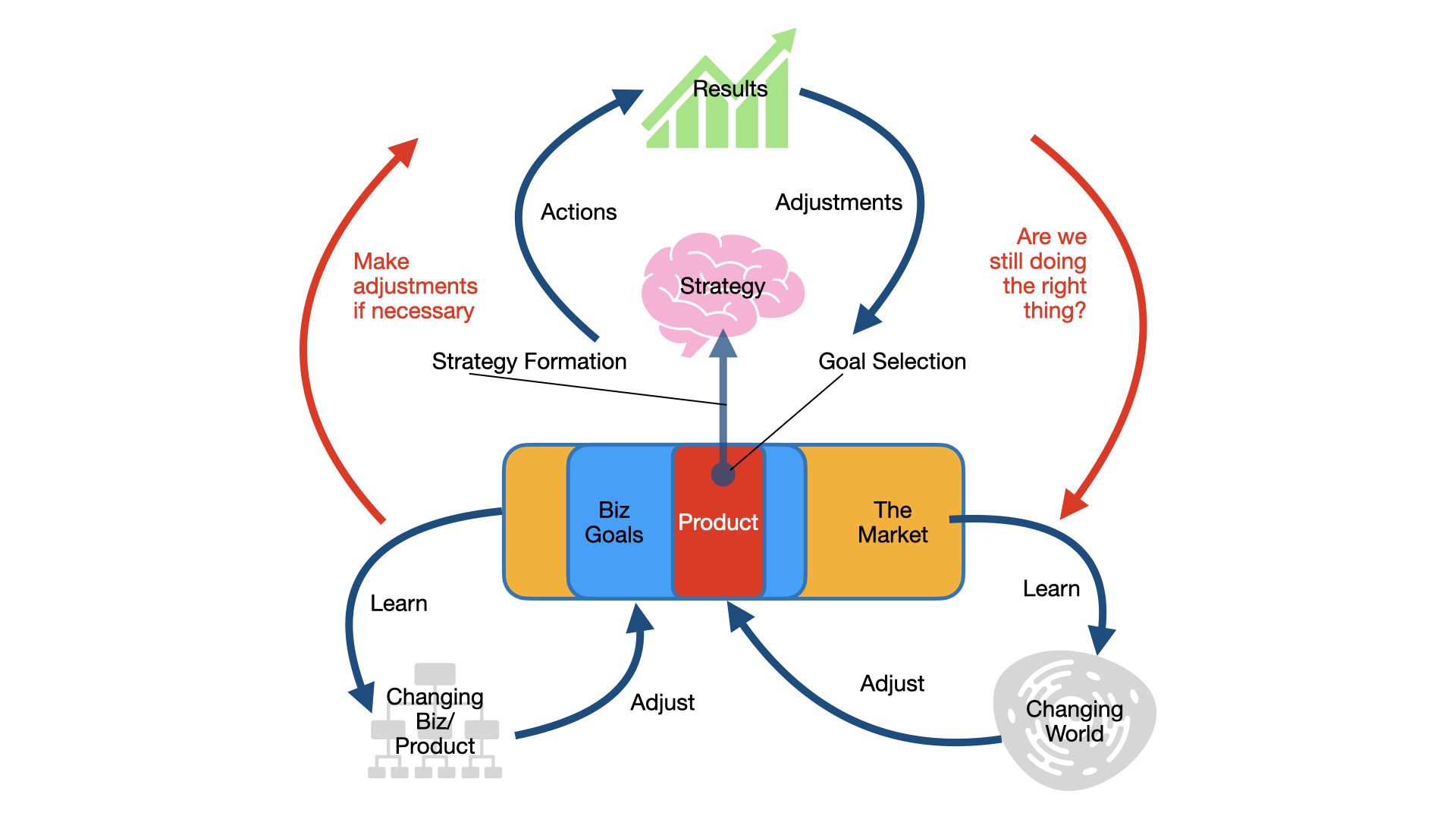
TLDR; I saw this model for determining one’s life (goal) strategy on the Wait But Why blog, and immediately thought - “Hey! That could be used to model product strategy, too…!”
First we have the marketplace - all of the things that exist already to serve a particular market or audience (that we are interested in), or that might exist in the future:
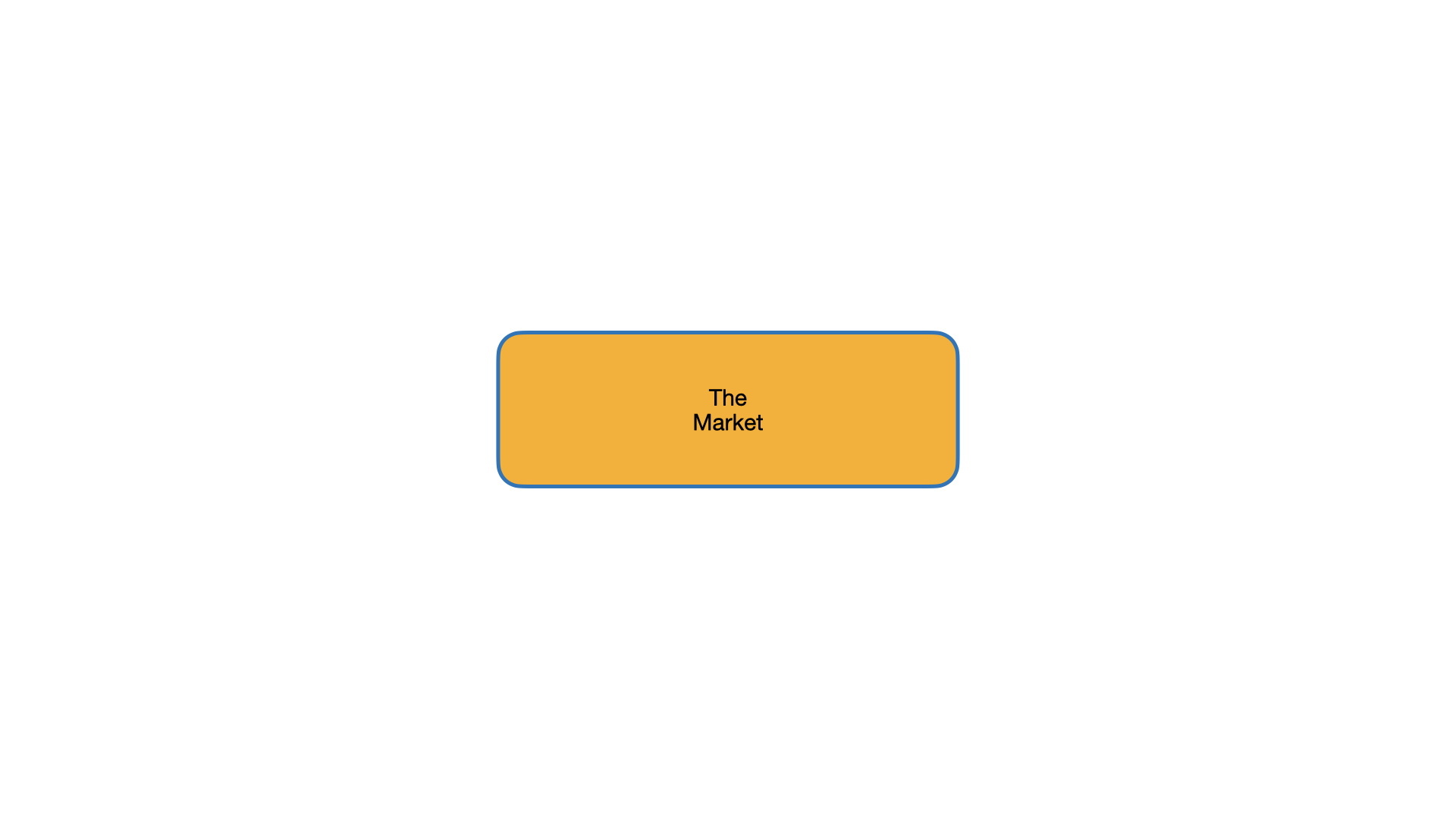
The objective of a business (or some other endeavour) is to capture a slice of that market. Perhaps to completely dominate it, or just to capture a share of it. That being the case, we can overlay the market with our business goals:
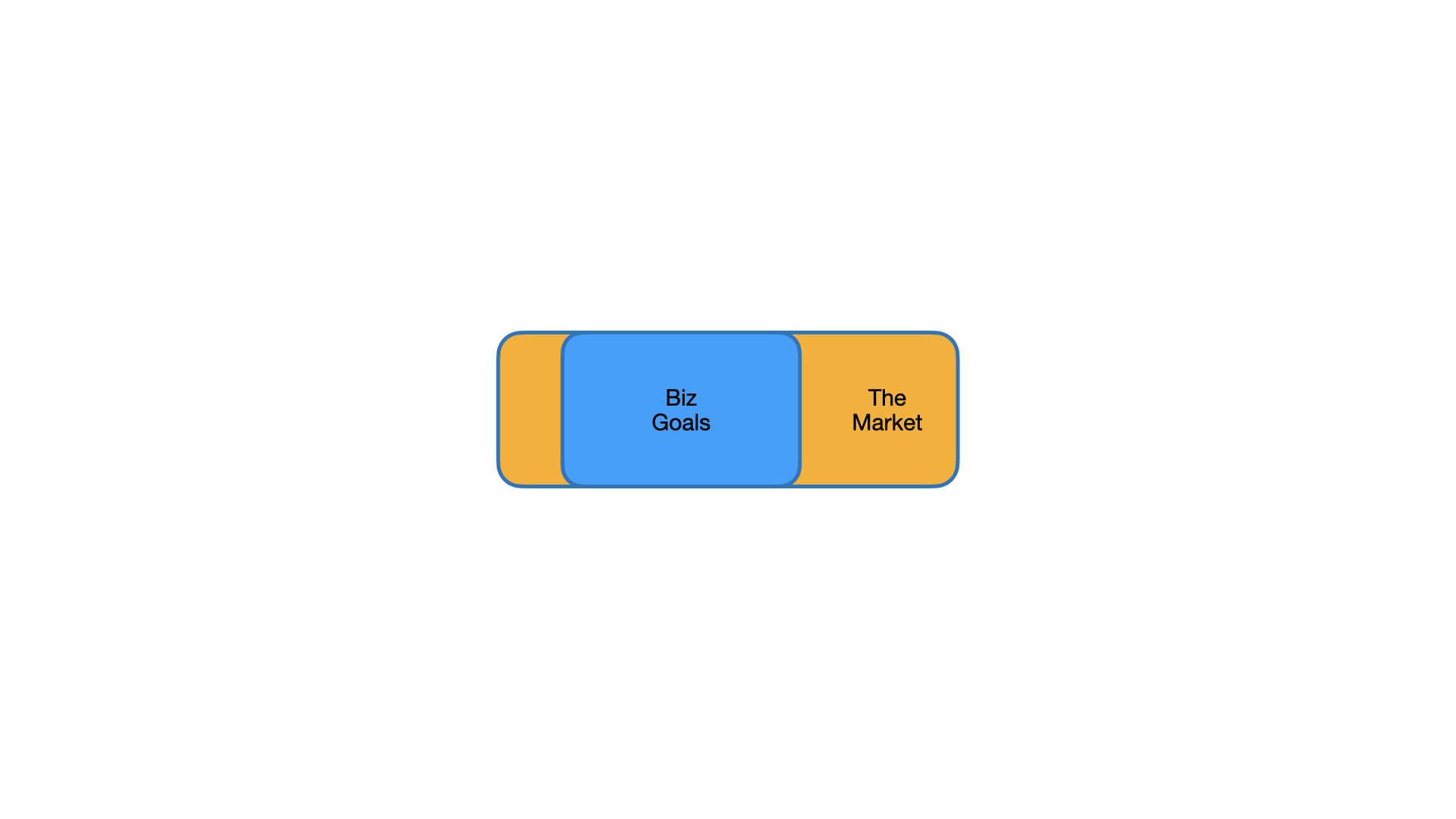
Of particular interest to the product manager (PM), is how the product fits into the model, since this is the thing that will help us to accomplish those business goals, and the primary area of concern for the PM.There could be one or many products occupying this space, taking up more or less of the business goals space depending on the size of the business and the products relationship to it.
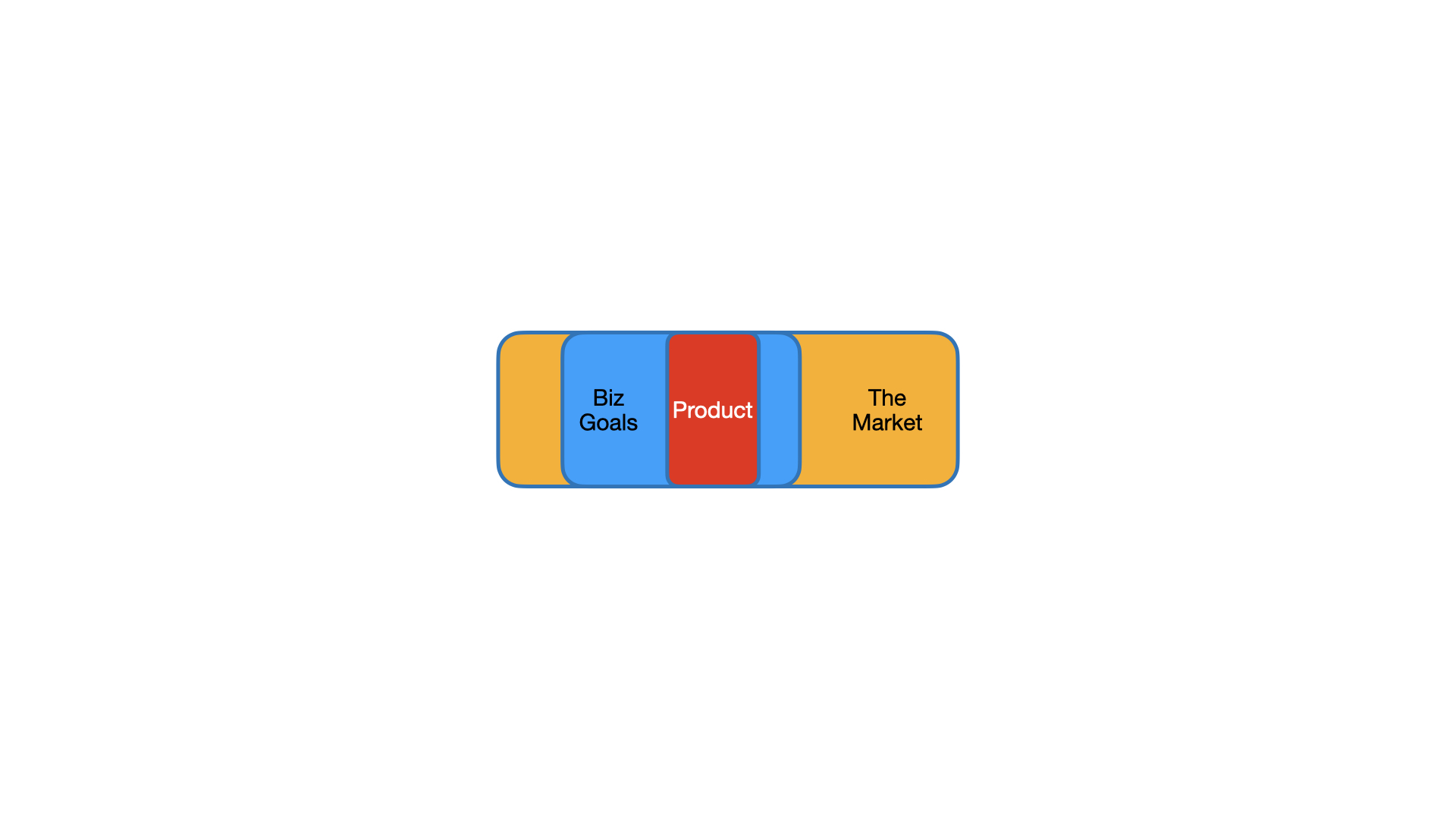
The model also assumes product/market fit at this stage. This may or not be an accurate view however, which is where the rest of the model comes in.
Product/market fit and the accomplishment of our business objectives will require some form of strategy. The strategy will inform and be defined by the goal(s) we are seeking to accomplish:
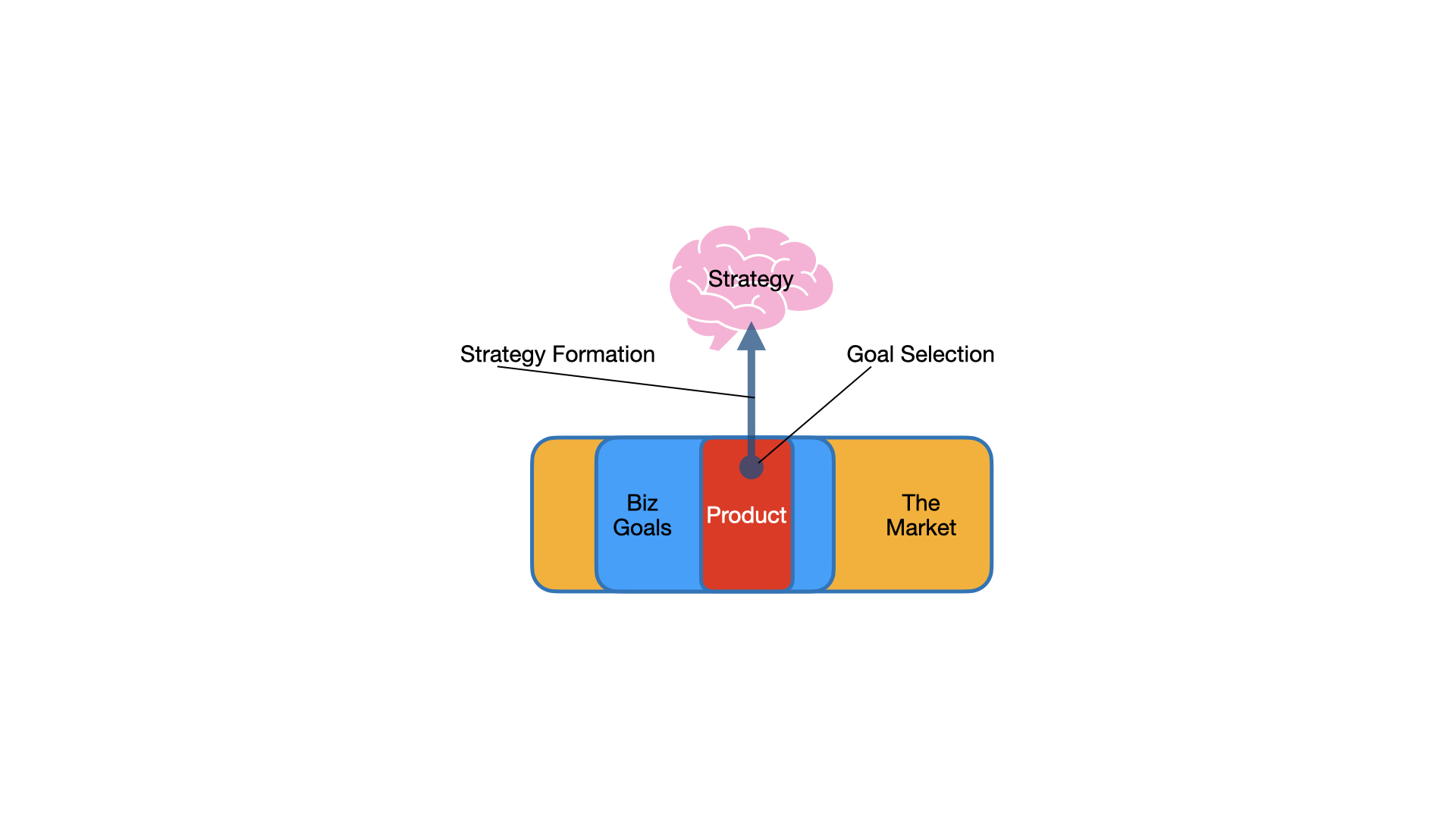
Having identified the market in which we want to operate, the product we wish to build to serve the market, and our strategy for bringing the product to the market, we could stop here, but to do so would ignore the reality that things change over the course of time. Our strategy and the goals or business objectives may need to be adjusted to reflect the changing reality of the market in which we are operating, and against which our strategy is being executed.
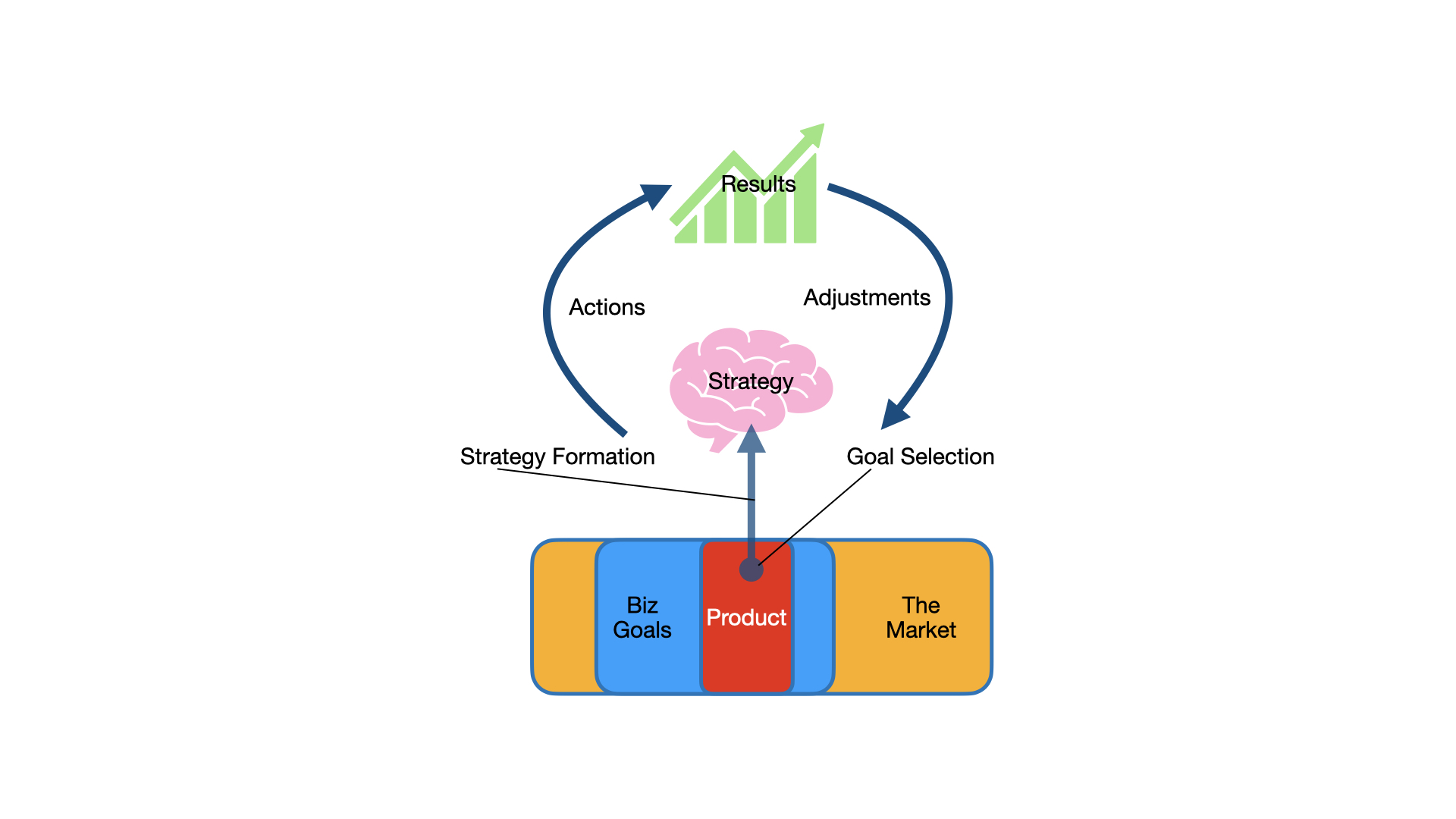
Feedback will be the natural outcome of actions taken to execute the strategy which has previously been identified.
Execution of that strategy (actions taken) will generate results (sales, downloads) and other forms of feedback (reviews or other customer commentary) which can be parlayed into adjustments to the strategy. Perhaps the product has ended up a little further away from the original goal, or is missing some vital feature that will serve customers better. Perhaps the market was misunderstood in some way and the product would actually serve some other customer base (segment) better. Maybe an additional or spun-off product would capture a bigger share of the market.
Whatever else is going on in terms of the strategy and its execution, it’s important to pay attention to the marketplace - the changing reality of the space in which the business is operating and in which the product (and business) exists:
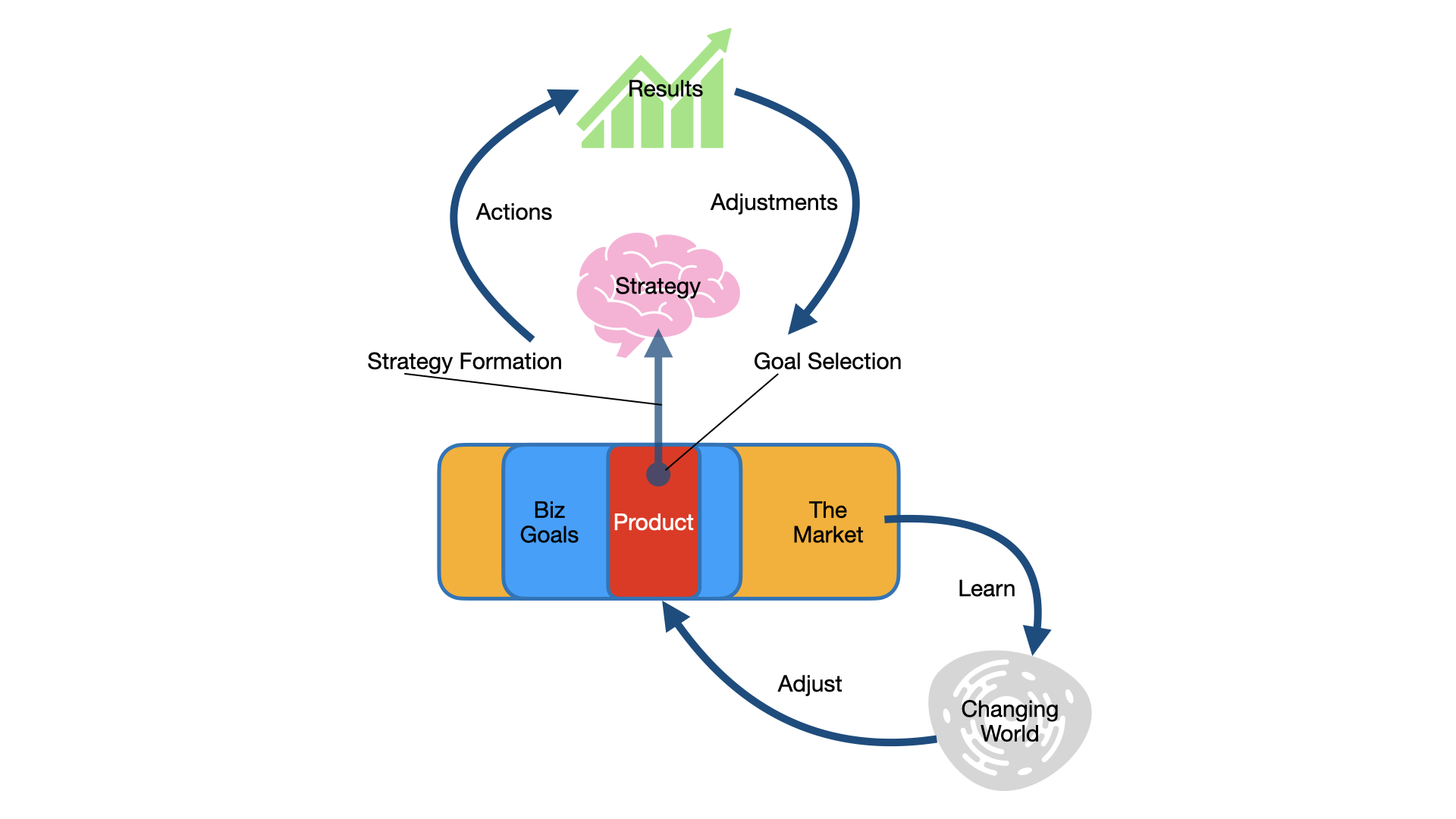
And to evolve the product and business plan accordingly:
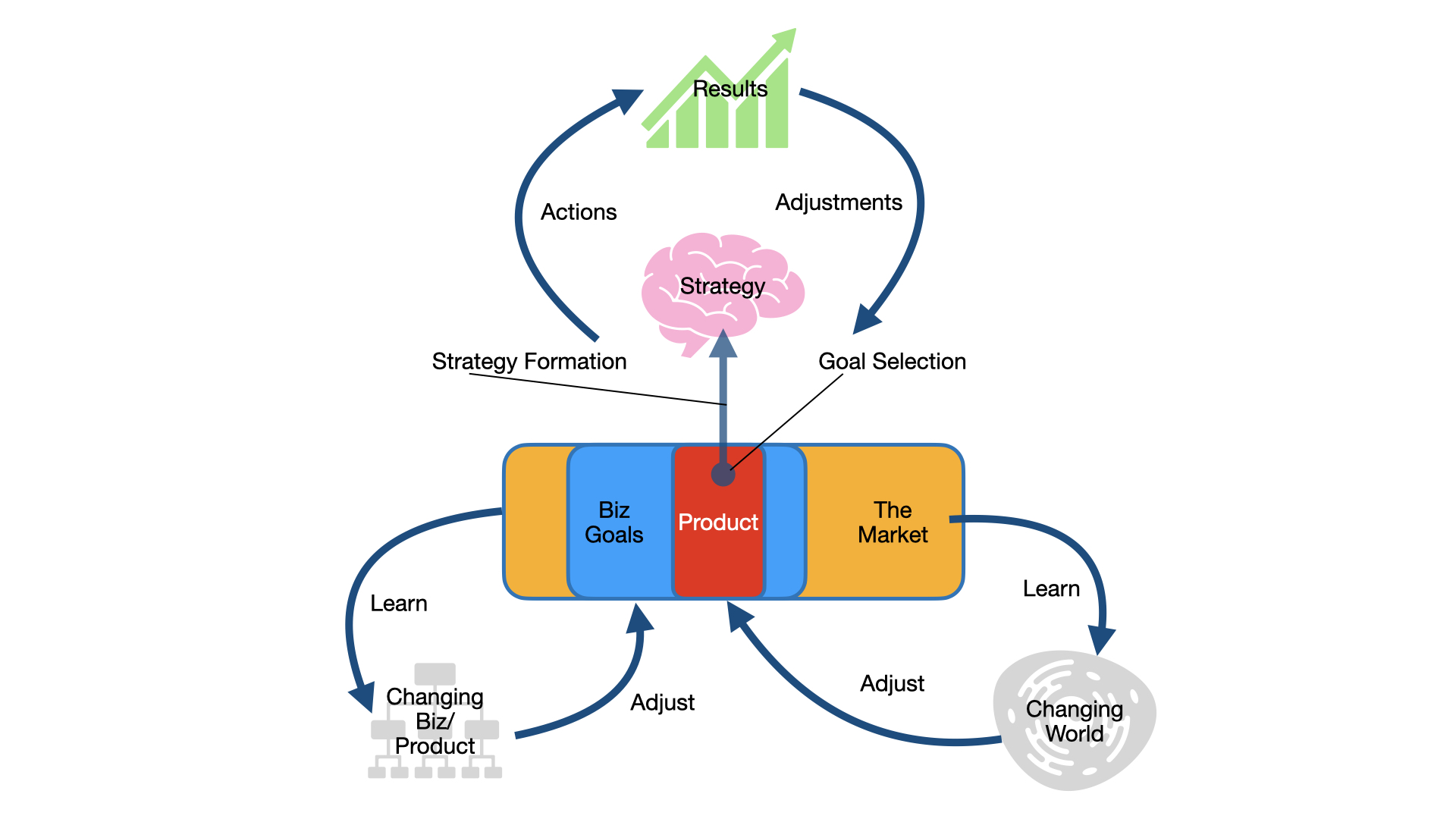
So that you can answer the questions of whether you’re still doing the right thing, or whether some adjustments are necessary:

For me, this model really helped to gain a new perspective on the PM role. I’m very grateful to Tim Urban for inspiring the original thought train (and highly recommend reading his original article).
What’s really going on here?
Of course, as with any model - it’s helpful but not accurate. The devil is in the detail. Questions such as the following need to be answered:
- How do you determine what the changing space of the marketplace in which you operate actually looks like? Where are the boundaries? Where exactly does your product fit in?
- What process do you actually use to reflect upon your business and/or product in order to gauge what and whether adjustments are necessary?
- How does all that information feed into the formulation of a strategy which then itself has to be executed and adjusted within the context of your organisation, business processes and taking into account any constraints?
On this front, I’ll defer to Tim Urban, who simply recommends regularly taking stock by asking “What’s really going on here?”
FootNote:
Model updated to better reflect adjustments to goal selection and strategy formation based on feedback from Jesper Ottosen.